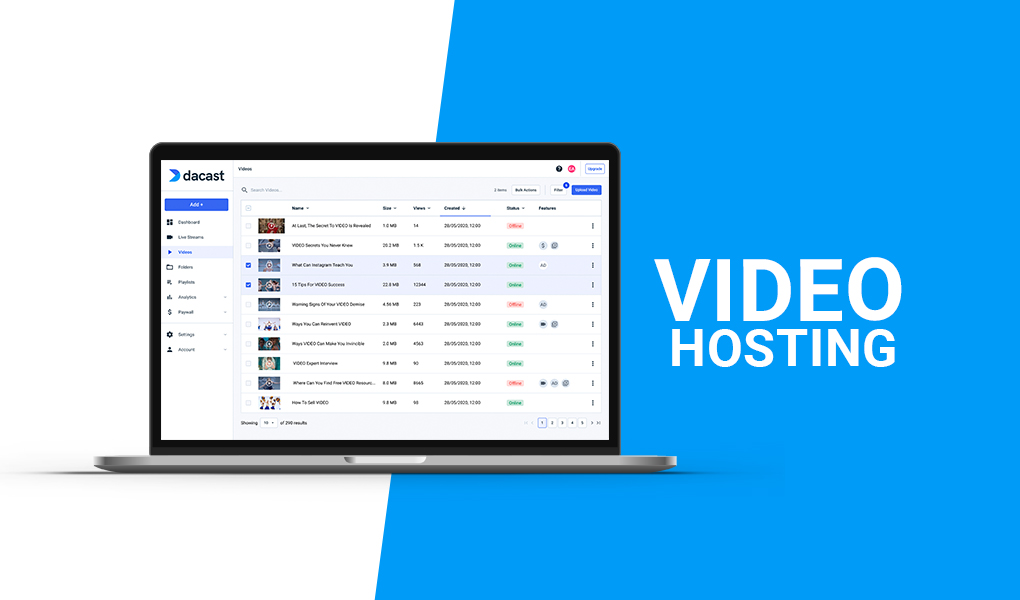What is a CDN? | How Do CDNs Work?
In the professional broadcasting world, CDN is short for content delivery network.
A CDN is a network of servers that deliver a web page or web content, such as video, to a user. The CDN copies the web content to a network of servers that are dispersed to different locations around a geographic region.
When a user accesses content that is part of a CDN, the CDN will redirect the request from the originating sites server to a server in the CDN that is closest to the user and deliver the cached content.
The closer the CDN server is to the user geographically, the faster the content will be delivered.
Using a CDN is ideal for streaming video, especially to a geographically diverse group of viewers.
Dacast uses top-tier CDNs including Limelight and Akamai, which have some of the largest networks of servers in the world. The global nature of these servers ensure scaleable and high quality live streaming.
Benefits of Using a CDN

As a broadcaster, providing your viewers with high-quality video content is absolutely essential. You want to create an enjoyable viewing experience to keep your viewers coming back.
Using a global CDN provides several benefits that relate to bringing that high-quality experience to viewers in broader geographic regions.
Some improvements that CDNs offer include faster loading times, lower bandwidth costs, higher content availability, and enhanced security.
Speedier loading times reduce latency. Since viewers tend to have little patience for lagging and buffering, this is a major plus.
CDN vs. Video Hosting
 Since they work so closely together, CDNs are sometimes confused with video hosts. When it comes to professional broadcasting, this is not an either/or situation.
Since they work so closely together, CDNs are sometimes confused with video hosts. When it comes to professional broadcasting, this is not an either/or situation.
A video host (ex: Dacast) is where your video lives. A CDN is simply the tool that brings it to your viewers.
Think of your nervous system. Everything is operated by your brain, but chains of nerves send signals all over your body to give it the information it needs to function.
A video hosting platform is a brain. It sends videos (or signals) to people to viewers via content delivery networks (the nerves). Both parts work together to bring viewers the content that has been requested.
Your online video host and CDN will work together to produce a high-quality broadcast.
Any questions or need help/access to this feature? Please contact us.
Not yet a Dacast user, and interested in trying Dacast risk-free for 14 days? Sign up today to get started.
Additional Resources
- Live Streaming CDNs and Why Businesses Should Utilize Them
- CDN For Live Streaming: What to Look For?
- Top 7 Video Streaming. CDN Providers for HTML5 Live Streaming in 2020
- CDN Comparison for High Quality Live Streaming & Video Hosting
- Live Streaming CDN Pricing Comparison (2019 Update)
- Can I Use My Own CDN with Dacast?
 Stream
Stream Connect
Connect Manage
Manage Measure
Measure Events
Events Business
Business Organizations
Organizations Entertainment and Media
Entertainment and Media API
API Tools
Tools Learning Center
Learning Center Support
Support Support Articles
Support Articles